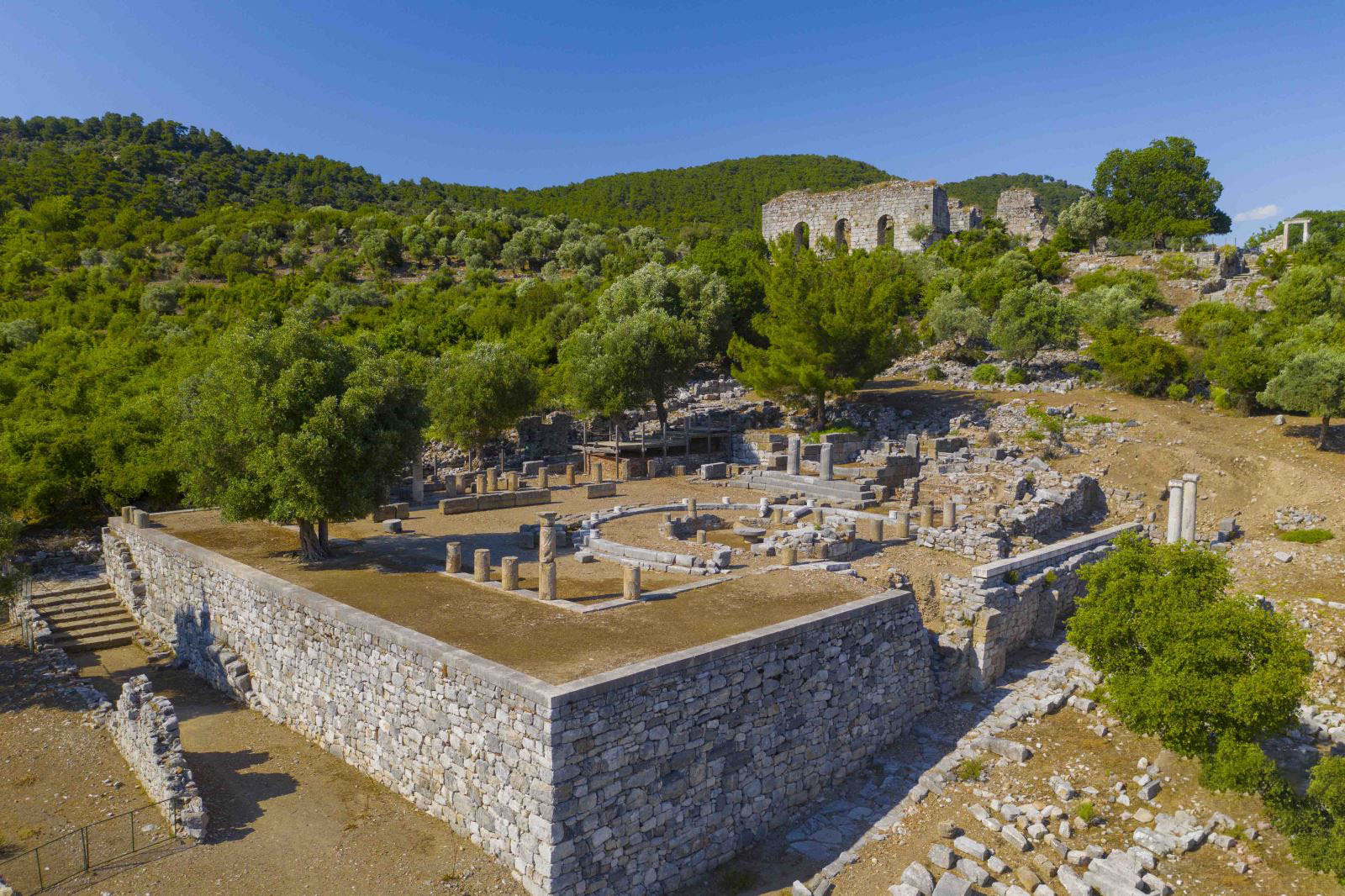Kaunos is a significant ancient city located near the modern town of Dalyan in the Muğla Province of Turkey. Once a thriving sea port, the city’s history dates back as far as the 10th century BC. Its strategic location on the border between the ancient regions of Caria and Lycia meant that its culture was influenced by both kingdoms. Over the centuries, Kaunos was ruled by various powers, including the Persians, Macedonians, and Romans, before eventually being incorporated into the Byzantine Empire. The city was ultimately abandoned after its harbor silted up, causing it to lose its commercial importance, and a malaria epidemic in the 15th century contributed to its final decline.
The most striking feature of Kaunos is the collection of Lycian rock tombs carved into the cliffs overlooking the Dalyan River. Dating back to the 4th century BC, these ornate tombs resemble temples and were built for kings and other high-status individuals. They reflect the Lycian belief in an afterlife, where the tombs were designed to be houses for the deceased. While the tombs are best viewed from the Dalyan riverbank, the archaeological site itself offers a wealth of other structures to explore, including a well-preserved Hellenistic theater, Roman baths, and the ruins of a Byzantine basilica with an intact mosaic floor.
Today, Kaunos is a popular destination for tourists, who can reach the site by taking a short boat ride across the Dalyan River. The city’s ruins are set amidst a beautiful natural landscape, providing a picturesque backdrop for exploration. Visitors can also see a unique circular structure that archaeologists believe was a wind measuring platform, used for city planning. The site is a testament to the region’s rich cultural and historical heritage and is currently on the UNESCO World Heritage Tentative List.

